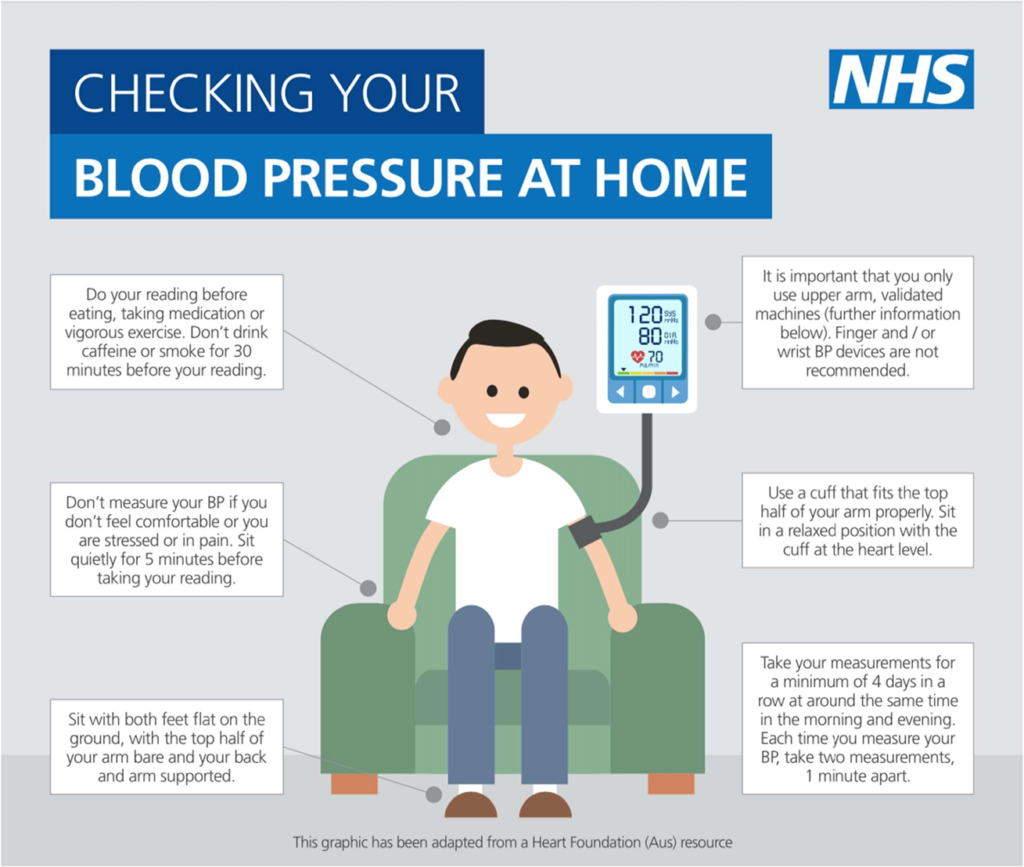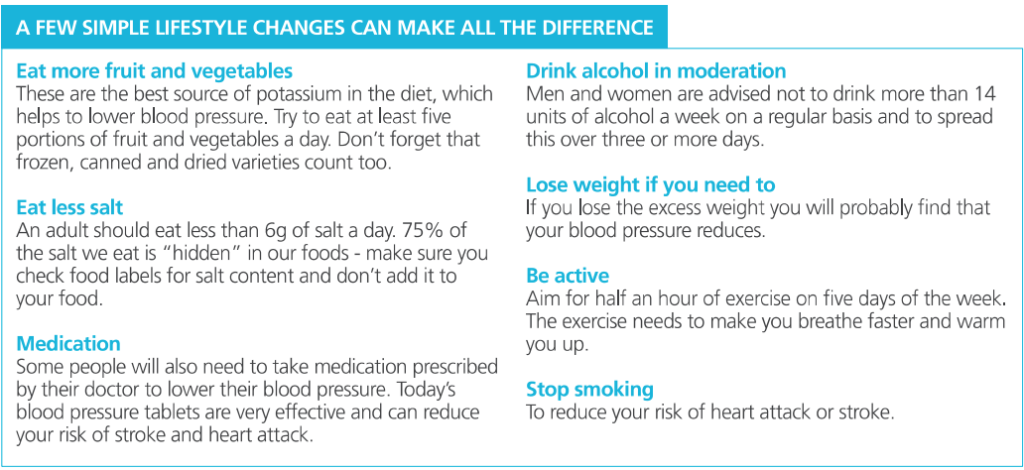Why am I being asked to measure my blood pressure at home?
Home monitoring is very useful for a number of reasons:
- To give a more accurate picture of what you blood pressure is like as you go about your daily life
- To see if your blood pressure is higher in the clinic than it is at home
- To allow you to see how your treatment is working for you
- To alert your GP to unexpected changes in your readings, helping them to adjust your medications if required
- To help pick out ‘white coat effect’ which can make your blood pressure higher than usual when it is taken in the clinic
Is measuring blood pressure at home the right thing for you?
Measuring blood pressure at home can be very useful and is now an important part of managing high blood pressure, but it is not for everyone. Some people become more anxious when they start measuring at home and end up taking readings far too often.
If you feel anxious you can discuss this with your doctor or nurse first. Before you decide to try measuring your blood pressure at home, ask yourself: is this going to make me feel more relaxed or more worried?
What do I need to do?
You will be asked to take two BP readings twice daily (morning and evening) for 7 days and drop them into or send them by email into your GP Practice. Your GP will review your average result and give you advice on any further readings or action if needed.

How to measure your own blood pressure
Many things can make your blood pressure rise for a short time. Before you take your reading:
- Make sure that you do not need the toilet, and that you have not just eaten a big meal.
- Do not measure your BP within 30 minutes of drinking caffeine or smoking, or immediately after exercise or drinking alcohol.
- Make sure you are relaxed and comfortable. If you are anxious or uncomfortable, this will make your blood pressure rise temporarily
- Wear loose fitting clothing like a short-sleeved t-shirt so you can push your sleeve up comfortably
- Always use the same arm for readings as each arm will give you a slightly different reading
- Before you take your readings, rest for a few minutes. You should be sitting down in a quiet place with your arm resting on a firm surface, palm facing upwards and feet flat on the floor
- Make sure your arm is supported and the BP cuff around your arm is at the same level as your heart
Taking your reading
- Put the cuff on following the instructions that come with your monitor
- When you are taking your reading, keep still and silent. Moving and talking can affect your reading.
- Take two readings about two minutes apart
- Record the two readings – Do not round your measurement up or down, just write down the number that comes up on the monitor
Your blood pressure reading
Blood pressure is measured in millimeters of mercury (mmHg). It is written like this: 140/90mmHg which is said “140 over 90”. The first and highest number shows ‘systolic’ pressure when your heart beats and pushes the blood around your body. The second lower number shows the ‘diastolic’ pressure when your heart relaxes and refills with blood.

- SYS = Systolic blood pressure
- DIA = Diastolic blood Pressure
Irregular heart rate alert
The monitor will show this heart symbol ((♡)) as an alert if it detects your heart rate is abnormally fast or irregular. This can be an important early warning sign of heart problems so should not be ignored but can also be a sign of other normal conditions.
Know Your Pulse – AF Association – UK (heartrhythmalliance.org)
If you feel well and have no symptoms you should contact your GP as soon as possible for more checks. Make sure this is noted on your recording form.
If you have noticed a recent sudden increase in your heart rate and are feeling dizzy, faint or having palpitations (a feeling of being aware of your heartbeat, or that your heart is pounding or beating irregularly), you should go to A&E.
What do your blood pressure results mean – a general guide Locate your average readings along the line.
Aged under 80 years -average blood pressure readings

Aged 80 years or over – average blood pressure readings

Remember
Do not be alarmed if you get an unexpected high value for either
reading. A single blood pressure reading is not representative of your
average resting blood pressure. Measure your blood pressure again at
another time, but if you find that it continues to be high, contact your
doctor or nurse.
What happens next?
Please send your results back to your GP.
- A paper copy delivered or posted to your GP Practice
- Email (if available)
Your GP will review your average result and give you advice on any further readings or action if needed.
What are the risk factors?
About 1 in 3 adults in Somerset has high blood pressure so it is fairly common.
Blood pressure tends to creep up as we get older. Males tend to have higher blood pressure than females. Some ethnic groups have an increased risk of high blood pressure.
The good news is that a number of lifestyle factors can also increase blood pressure and small changes in these can help bring your blood pressure down.
Medication
Some people will need to take medication prescribed by their doctor to lower their blood pressure. Today’s blood pressure tablets are very effective and can reduce your risk of stroke and heart attack.
For more information or advice
Visit the Healthy Somerset website for support on lifestyle change information on local services and useful apps www.HealthySomerset.co.uk/heart

